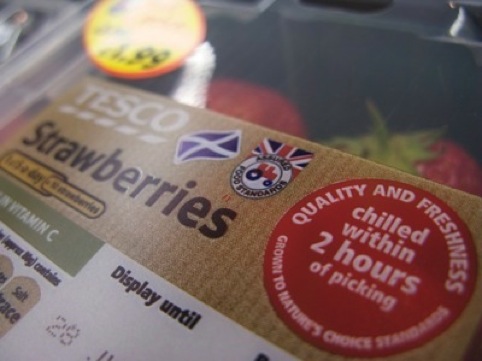Too many logos?
Sainsbury’s has this week announced that it is to drop the Red Tractor logo from its products, suggesting that shoppers are confused by the high numbers of logos on packaging.

Logos and kitemarks such as this have long been a bugbear for packaging designers and brand managers.
Alongside the Red Tractor on packaging, for example, you might find a ‘traffic light’ indicator of fat and carb content, a mark showing the packaging is recycled, or Forest Stewardship Council-certified and the EU’s ‘leaf’ logo, which certifies organic food.
It almost makes one yearn for the simplicity of unadorned packaging of the 70s. Not that this simplicity isn’t achievable today – check out Coley Porter Bell’s work on Morrisons’ value range for a more contemporary example of how to do minimalism well.
Of course, the biggest problem with all these logos, kitemarks and other items, isn’t that they make life difficult for designers, it’s that overuse means that they can become meaningless for consumers.

Source: Eurofruit
Logos on supermarket packaging
The Red Tractor, for example – who knows the detail of exactly what it means?
The answer is that it appears on products that can be traced to British farms which have high standards of safety, hygiene, animal welfare, and other considerations.
But what happens when the meaning of the logo itself becomes ambigious? The Fairtrade Foundation was compelled last week to issue a statement about the use and meaning of its Fairtrade mark.
A BBC Watchdog programme had highlighted that a Fairtrade logo on a chocolate bar might not necessarily mean that it contains Fairtrade cocoa beans – rather it means that the chocolate manufacturer has committed to buying a certain amount of Fairtrade beans, which could later be mixed with uncertified beans.
Now it’s clear that anything that can be done to encourage organic, sustainable or Fairtrade production should be actively encouraged.
And anything that enables consumers to make a responsible and educated choice should be equally encouraged.
But is a situation in which consumers become bombarded with logos they don’t fully understand really a helpful one?
-
Post a comment




